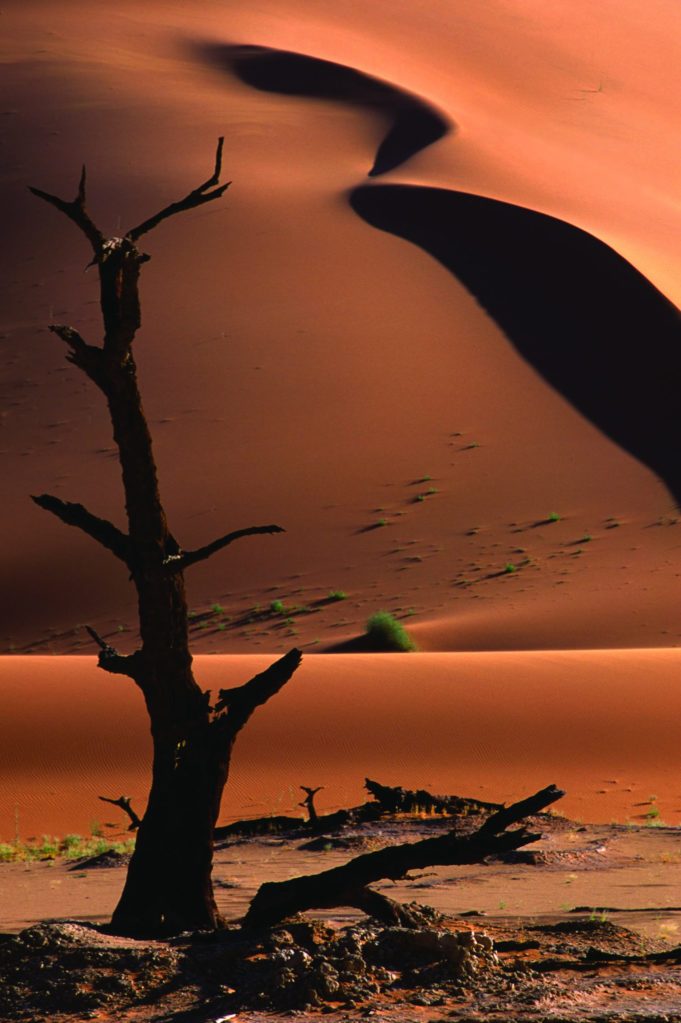If ever there was a country that could be described as Africa for beginners, Namibia would be a strong contender: a young, but stable, democracy and an open economy in a country blessed with good mineral and natural resources; a robust financial system, good infrastructure and an independent judiciary.
In spite of the relatively small size of the economy, with a Gross Domestic Product of around $12.6 billion, Namibia has been something of a niche destination, especially for mining companies, since achieving independence in 1990. While only the eighth largest producer of diamonds, its production is 90% gem quality and a mainstay of the economy.
The country is also a popular tourism destination and has marketed itself as an up-market holiday for European clients, much like neighboring Botswana. Its fishing industry is considered a world-class resource and is the source of much of Spain’s European whitefish exports.
Over the past two decades, Namibia has recorded respectable economic growth, averaging at 5 to 6% per annum, but it has been slipping of late. According to the latest available figures for the National Accounts for 2011, growth has dropped from 6.6% in 2010 to 4.8% in 2011, largely as result of a slump in the mining sector. Inflation has remained relatively stable, although it is expected to increase from 2011’s 5% to 6.5% this year.
Historically, the mining sector—followed by agriculture, fisheries and tourism—has been the engine of the Namibian economy, with mining’s contribution peaking at 15.9% of GDP in 2008. This was largely due to an unprecedented boom in uranium exploration in 2004-2010, which saw two new uranium mines opening in addition to the 36-year-old RioTinto-owned Rössing Uranium mine.
However, the economic fall-out from the 2008 international financial crises landed in Namibia shortly afterwards as investment flows froze and mining’s share of GDP contracted by a record 45%, as the impact of the February 2011 Fukushima incident pushed uranium prices down to levels where several uranium mining projects had to be shelved. The largest of these, the Chinese-owned Swakop Uranium project, is however still on track to commence production in 2015.
This trend has been offset to some extent by growing interest in the potential for finding off-shore oil and gas deposits along the 1,200 kilometer long Atlantic coastline, which is held to be analogous to the Brazilian geology, that has in recent years yielded impressive oil fields. The Kudu gas field, a modest deposit of 5.7 Tcf, was discovered along the southern coast line in the 1970s, but because of low international prices for this commodity, was never developed due to cost considerations.
A looming, region-wide electricity shortage has however added new impetus to investment in this field, and several oil majors, including Shell and BP, have recently joined forces with Namibian investors to resume the search for the precious commodity. The government announced that it was to push ahead with the development of the Kudu gas field, in order to construct a gas-fired power station that it hopes will renew momentum in the development of other mining projects, as well as take advantage of a regional electricity shortage by selling excess power to neighboring South Africa.
A recovery in zinc and tin prices in the third quarter has seen renewed interest in exploration for these commodities, while continued global insecurity has also seen the revival of several gold-mining projects. There has also been renewed interest from Indian and Chinese investors in hitherto undeveloped iron ore deposits. A planned extension of the local railway network into Botswana to allow it to exploit and export newly discovered coal deposits, via Namibia’s Lüderitz and Walvis Bay harbors, is widely expected to help the mining sector regain its prime position in the local economy.
Namibia, however, is not without its own problems, the most obvious of which is a persistently high unemployment rate, exceeding 51% in 2011, as well as a growing corruption problem in areas of government procurement and related services.
This has brought additional pressures to bear on the ruling South West Africa Peoples Organization (SWAPO), which has been in power since 1990 and is struggling to deal with an internal transition in leadership.
To address the most pressing problem of unemployment, the government has embarked on an expansionary budget over the past three years under the so-called Targeted Intervention Program for Employment and Economic Growth (TIPEEG), a $1.5 billion stimulus program, that the government hopes would create an additional 104,000 new jobs per annum over the next five years.
Results so far have been disappointing in respect of employment creation, largely as a result of government’s insistence on making Black Economic Empowerment (BEE) the key criteria for accessing funding under this program.
This has also impacted on Namibia’s competitiveness: the most recent rankings released by the World Economic Forum’s Global Competitiveness Report showed the country has slipped nine positions to 92nd of 144 countries surveyed.
More worryingly, Namibia slipped 57 points in terms of rankings for the macro-economic environment due to the current high levels of debt—27% of GDP. Ranking of its infrastructure has also slipped by 26 points, which is of major concern to the mining industry.
Some of the concerns are being addressed: harbor facilities are currently being expanded to improve handling of bulk commodities like ore and the expansionary budgetary period is to cease by 2013-14.
As they say, ‘Watch this space’.
